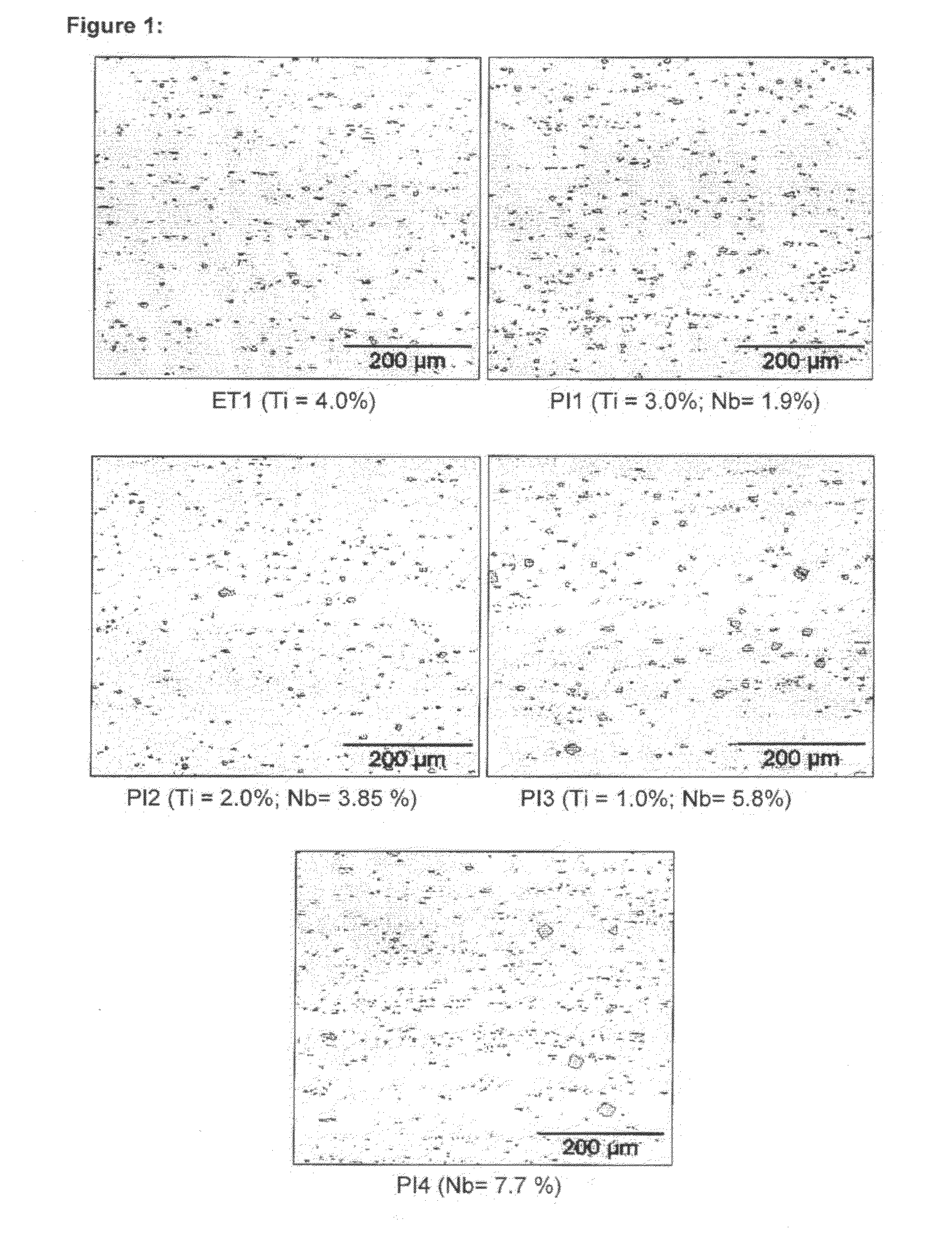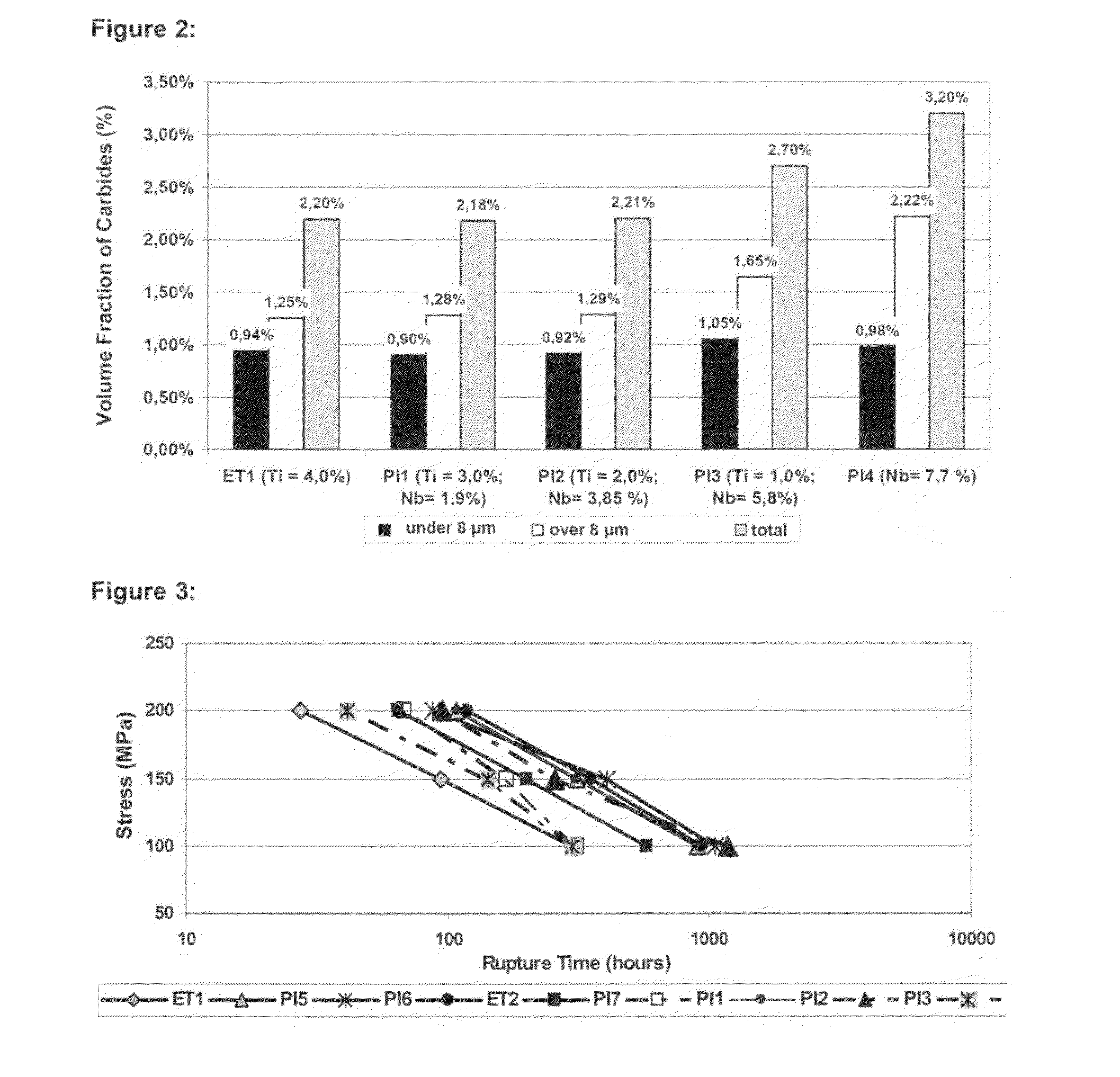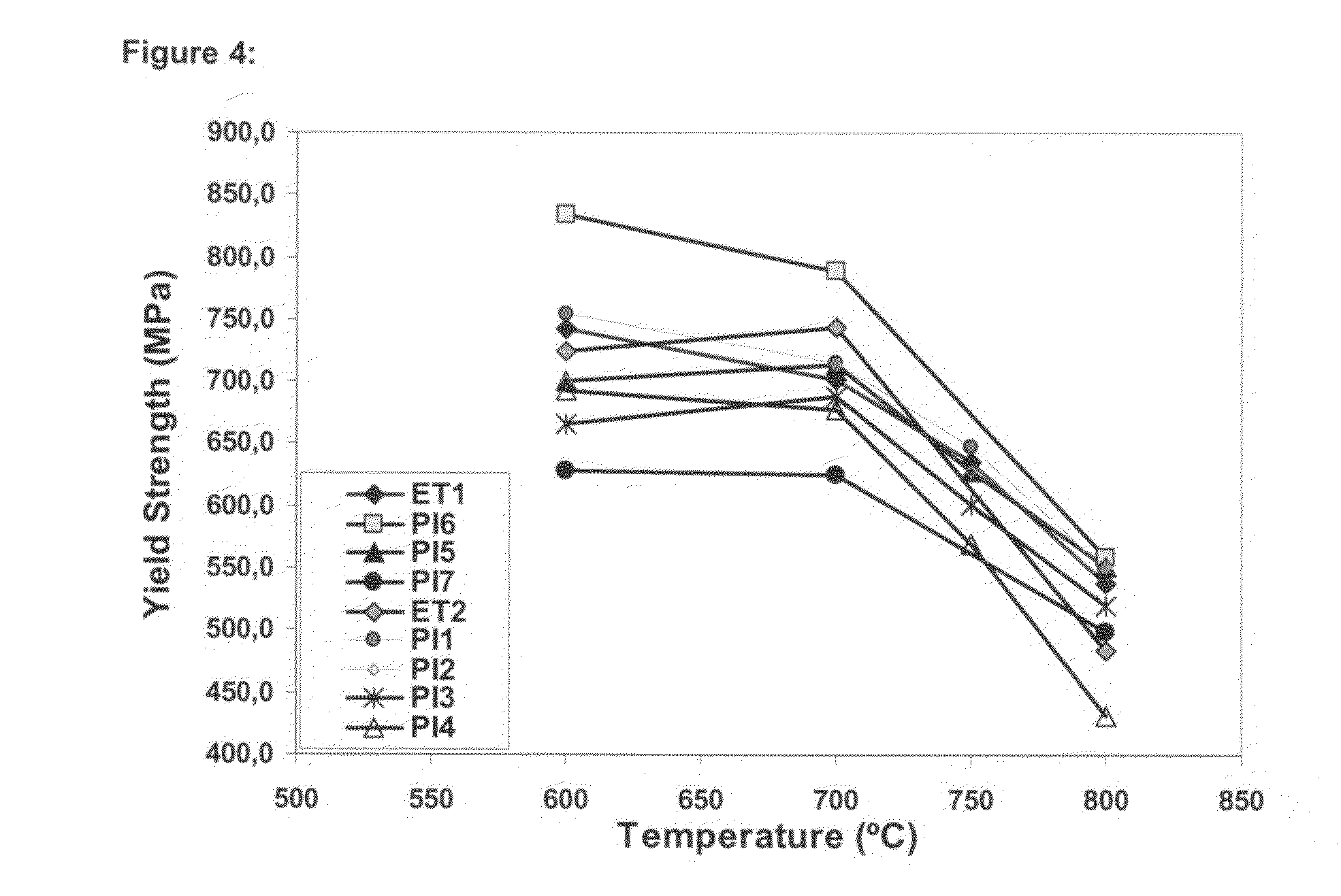Wear resistant alloy for high temprature applications
a technology of high temprature and alloy, which is applied in the field of wear-resistant alloy, can solve the problems of mechanical resistance and corrosion resistance, increase the final cost of the valve, and require the use of costly nickel-based superalloys, so as to improve the hot properties of the alloy, increase the chemical affinity, and improve the effect of hot hardness
- Summary
- Abstract
- Description
- Claims
- Application Information
AI Technical Summary
Benefits of technology
Problems solved by technology
Method used
Image
Examples
Embodiment Construction
[0045]FIG. 1 shows the microstructure observed in an optical microscope of alloys ET1 and PI1 through PI9, after polishing and attack with Gliceregia reagent for 15 seconds and 120 times magnification.
[0046]FIG. 2 shows the result of the image computer analysis to quantify the carbides observed in the alloys studied with different Ti, Nb and Al contents. Such analysis was performed in a total surface area of 65,990,417 μm2 of the sample, in 50 random fields with 500 times magnification.
[0047]FIG. 3 shows the results of the creep testing of the alloys hereof as compared to ET1 and ET2 alloys, by assessing the creep rupture time for an 800° C. temperature and 3 tensile stress levels. FIG. 4 compares hot resistance of the alloys hereof to ET1 e ET2 alloys, as of the flow stress for several temperatures.
[0048]FIGS. 5 and 6 show the result of the abrasive wear test carried out with ET1, ET2 alloys and PI1 through PI7 alloys. The test was made by pin against sandpaper; the test specimens ...
PUM
| Property | Measurement | Unit |
|---|---|---|
| surface area | aaaaa | aaaaa |
| temperature | aaaaa | aaaaa |
| contact speed | aaaaa | aaaaa |
Abstract
Description
Claims
Application Information
 Login to View More
Login to View More - R&D
- Intellectual Property
- Life Sciences
- Materials
- Tech Scout
- Unparalleled Data Quality
- Higher Quality Content
- 60% Fewer Hallucinations
Browse by: Latest US Patents, China's latest patents, Technical Efficacy Thesaurus, Application Domain, Technology Topic, Popular Technical Reports.
© 2025 PatSnap. All rights reserved.Legal|Privacy policy|Modern Slavery Act Transparency Statement|Sitemap|About US| Contact US: help@patsnap.com



